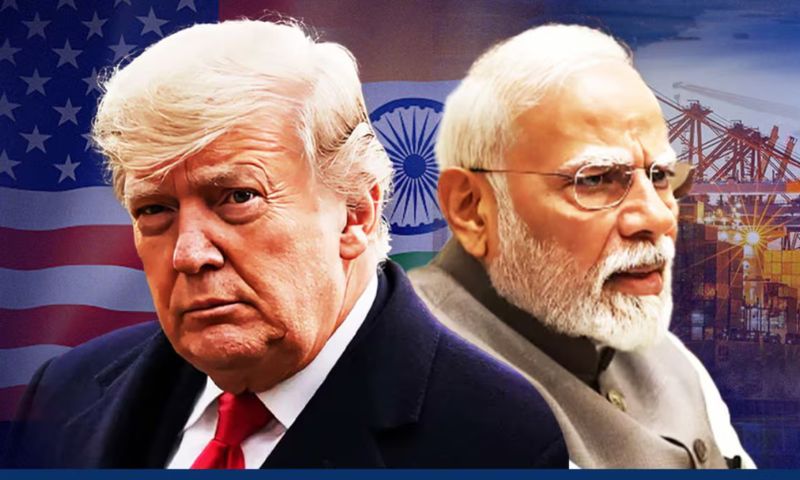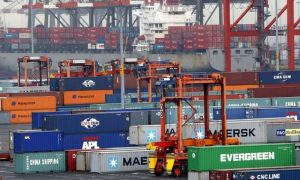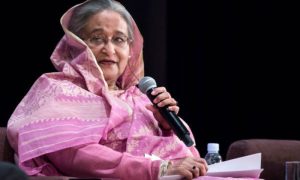WASHINGTON: United States President Donald Trump on Tuesday warned that he would “very substantially” increase tariffs on Indian imports, currently set at 25 percent, within the next 24 hours, citing India’s continued purchase of Russian oil as the main reason.
“India has not been a good trading partner, because they do a lot of business with us, but we don’t do business with them. So we settled on 25 percent, but I think I’m going to raise that very substantially over the next 24 hours, because they’re buying Russian oil,” the US President told CNBC in a televised interview.
“They’re fuelling the war machine, and if they’re going to do that, then I’m not going to be happy,” Trump said, adding that the main sticking point with India was that its tariffs were too high.
Trump did not specify a new tariff rate for India but stated that it would be substantially higher than the current level.
The US President last week said he would impose a 25 percent tariff on goods imported from India and added that New Delhi would also face an unspecified penalty, but gave no details.
Later, Trump mounted a sharp attack and said, “I don’t care what India does with Russia. They can take their dead economies down together, for all I care.”
Over the weekend, two Indian government sources told Reuters that India will keep purchasing oil from Russia despite Trump’s threats.
In turn, White House Deputy Chief of Staff Stephen Miller had accused India of effectively financing Russia’s war in Ukraine by purchasing oil from Moscow. Trump had made the same threat about substantially raising tariffs a day ago.
Responding to the threat, India’s Ministry of External Affairs (MEA) issued a statement claiming that the US and the European Union “targeted” New Delhi for purchasing Russian oil after the Ukraine war.
“India began importing from Russia because traditional supplies were diverted to Europe after the outbreak of the conflict,” the statement read.
“The US at that time actively encouraged such imports by India for strengthening global energy market stability.”
New Delhi highlighted in its statement that the very nations criticising India were engaging in trade with Russia themselves, adding that the goods exchanged include energy, fertilisers, mining products, chemicals, iron and steel and machinery and transport equipment.
India, the world’s third-largest oil importer, is the biggest buyer of seaborne Russian crude, a vital revenue earner for Russia.
The US levy on India exceeds those agreed by some other nations in deals with the Trump administration.
For example, the tariff on Vietnam is set at 20 percent and on Indonesia at 19 percent, with levies of 15 percent on Japanese and European Union exports.
Last week, Trump said Washington had reached a trade deal with India’s arch-rival Pakistan that Islamabad said would lead to lower tariffs on its exports.
Since India’s short but deadly conflict with Pakistan in May, New Delhi has been unhappy about Trump’s closeness with Islamabad and has protested, casting a shadow over trade talks.
Trump has repeatedly taken credit for the India-Pakistan ceasefire he announced on social media on May 10, but India disputes his claim that it resulted from his intervention and trade threats.
By declaring the Indian economy dead in the water, Trump has put Indian Prime Minister Narendra Modi and his party in a bind.
Until recently, the ruling Bharatiya Janata Party was canvassing support for the US president’s election.
Its supporters were holding special prayers and muttering mystical chants for Trump’s victory. There was at least one temple created where a sculptured image of Trump was worshipped.

























